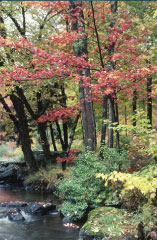11 October
Jon Hess
Northwest Fisheries Science Center, NOAA
The genetic seascape: range-wide comparison of a rockfish sister species reveals their discordant past
Abstract
Black (Sebastes melanops) and yellowtail (Sebastes flavidus) rockfish are sister species and sympatric across much of their range. However, black rockfish adults occupy shallower depths and on average disperse over smaller distances than yellowtail rockfish adults. These two traits, adult depth preference and average adult dispersal distance, are hypothesized to affect the rate of gene flow. Due to greater larval retention and the isolating effects of island-like spacing of suitable shallow habitat, shallow-dwelling species are more likely to show evidence of restricted gene-flow as compared to deeper-dwelling species. Species with smaller average adult dispersal distances are likely to have more restricted gene flow compared to those with larger average adult dispersal distances. On the basis of their differences in these two traits, black rockfish is expected to have less gene flow (i.e., more genetic structure) than yellowtail rockfish. However, results from a genetic study using six microsatellites and mtDNA sequence data contradict this prediction. Both black and yellowtail rockfish show significant genetic structure. Moreover, the observed genetic structure is driven by the presence of a few genetic “hotspots” where gene frequencies shift dramatically over a short distance. In particular, a region around Cape Mendocino, California—known for its standing eddies—may have a role in disrupting gene flow across neighboring populations in both species. Included is a discussion of the ways in which the history of a species’ expansion into its range may interact with oceanographic barriers to dispersal and result in genetic breaks. Fine-scale, range-wide genetic studies of marine species have enormous potential to help in fisheries management by revealing the various locations along the coastline that are significant dispersal barriers. This study is a step towards a genetic database that would serve that role in providing a “genetic seascape” to search for concordance of genetic disruptions across marine species.
Bio
I completed my undergraduate work at Denison University in Granville, Ohio, where I was introduced to the field of molecular genetics by my advisor, Dr. Eric Liebl. My project involved a useful study bug, the fruit fly, to investigate tumor suppressor genes. I then enrolled in a PhD program in Evolution and Population Biology at Washington University in Saint Louis, Missouri. Here, laboratory rotation projects allowed me to experience various research topics from quantitative genetics of obesity in mice to fire management and reintroduction of collared lizards in the Missouri Ozark Mountains. In the end, I decided on a dissertation project in Dr. Alan Templeton’s lab working with a highly social subterranean rodent, the naked mole-rat. I traveled to Kenya to collect samples for a population genetics project. During the long process of analyzing population genetic data for this rodent species, I recognized the utility of geographic information systems (GIS) for their ability to provide environmental context to genetic patterns. For example, GIS made it easy to visualize that rivers were correlated with reduced gene flow among naked mole-rat populations. When it came time to find a post-doctoral project, part of my decision was based on a desire to work with a biological system that would benefit from a high-resolution spatial analysis—and what better system is there than a continuously distributed marine species? So for my post-doctoral work, I came here to Seattle for a National Research Council fellowship at the Northwest Fisheries Science Center to research rockfish. Currently, I am continuing with research in population genetics at NOAA on a variety of organisms from invasive sea-squirts to steelhead. My general interests involve characterizing population genetic structure and inferring ecological, historical, and biological processes that have influenced the current distribution and diversity of species.
Aquatic & Fishery Sciences Home
The University of Washington is committed to providing access, equal opportunity and reasonable accommodation in its services, programs, activities, education and employment for individuals with disabilities. To request disability accommodation, contact the Disability Services Office at least 10 days in advance at 206-543-6450/V, 206-543-6452/TTY, 206-685-7264 (FAX); dso@u.washington.edu.
webmaster@fish.washington.edu
Updated

